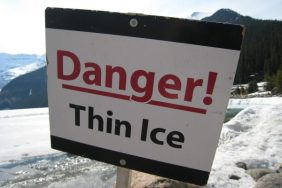 Responsible snowmobilers ride with enthusiasm because they enjoy the outdoors, and they treat the wealth of trail systems and riding areas with respect. They always stay safe and legal as they ride: waiting for enough snow cover to protect vegetation, never running over and damaging trees and shrubs, and they avoid disturbing wildlife while maintaining a courteous attitude toward other individuals they encounter who are also enjoying nature’s outdoor playgrounds.
Responsible snowmobilers ride with enthusiasm because they enjoy the outdoors, and they treat the wealth of trail systems and riding areas with respect. They always stay safe and legal as they ride: waiting for enough snow cover to protect vegetation, never running over and damaging trees and shrubs, and they avoid disturbing wildlife while maintaining a courteous attitude toward other individuals they encounter who are also enjoying nature’s outdoor playgrounds.
Hours on the snow can be tiring. The cold, winds, and even the motion and vibrations of the sled can begin to slow reaction times, making riding more difficult. And after a full day out, low-light and darkness present other dangers – as does an overcast day. Estimating distances accurately becomes a challenge. Experienced riders often keep a point of reference as light begins to fade in order to stay on course. They never over drive their headlights, and they reduce their speed so their sled has time to come to a complete stop if necessary.
Water hazards are of particular concern, and the safest snowmobiling rule is to never attempt to cross a lake or river. The most obvious danger is plunging through the ice. Drowning is actually a leading cause of snowmobiling fatalities. Don’t take other’s word that the ice is sufficiently frozen to support your sled. If you do go through the ice, your snowmobile suit and helmet might keep you afloat for a few minutes and you must pull yourself out quickly. Slide back onto the ice – using anything sharp to dig in and aid your pull. Kick your feet like a seal to propel your body onto the ice. If the ice keeps breaking, continue moving toward the shore. Once onto the ice, roll away from the hole and don’t stand up…crawl until you are well away from the hole. Do NOT remove your gloves or mittens and seek immediate shelter where you can get warm and dry.
Collisions on lake ice happen more frequently than people think and are responsible for a large number of accidents, many serious. Lakes are not uniformly flat, wide open, or free of obstruction. While it’s tempting to imagine going full out across a frozen lake surface, in reality there are simply too many things that can go wrong.
Mountain snowmobiling is spectacular, but poses extra dangers because of avalanche risk. Riders should have proper mountain-riding training, and mountain snowmobiles should always carry avalanche beacons, shovels, and probe poles. Be especially cautious of slopes steeper than 30 degrees. Depending on the terrain, an avalanche can carry the sled over a cliff, push it into the trees, or bury it deep in a gully. Some areas are posted for danger or closed to snowmobiles. Know the conditions before you head out.
Avalanche information is available locally, and through www.avalanche.org.








